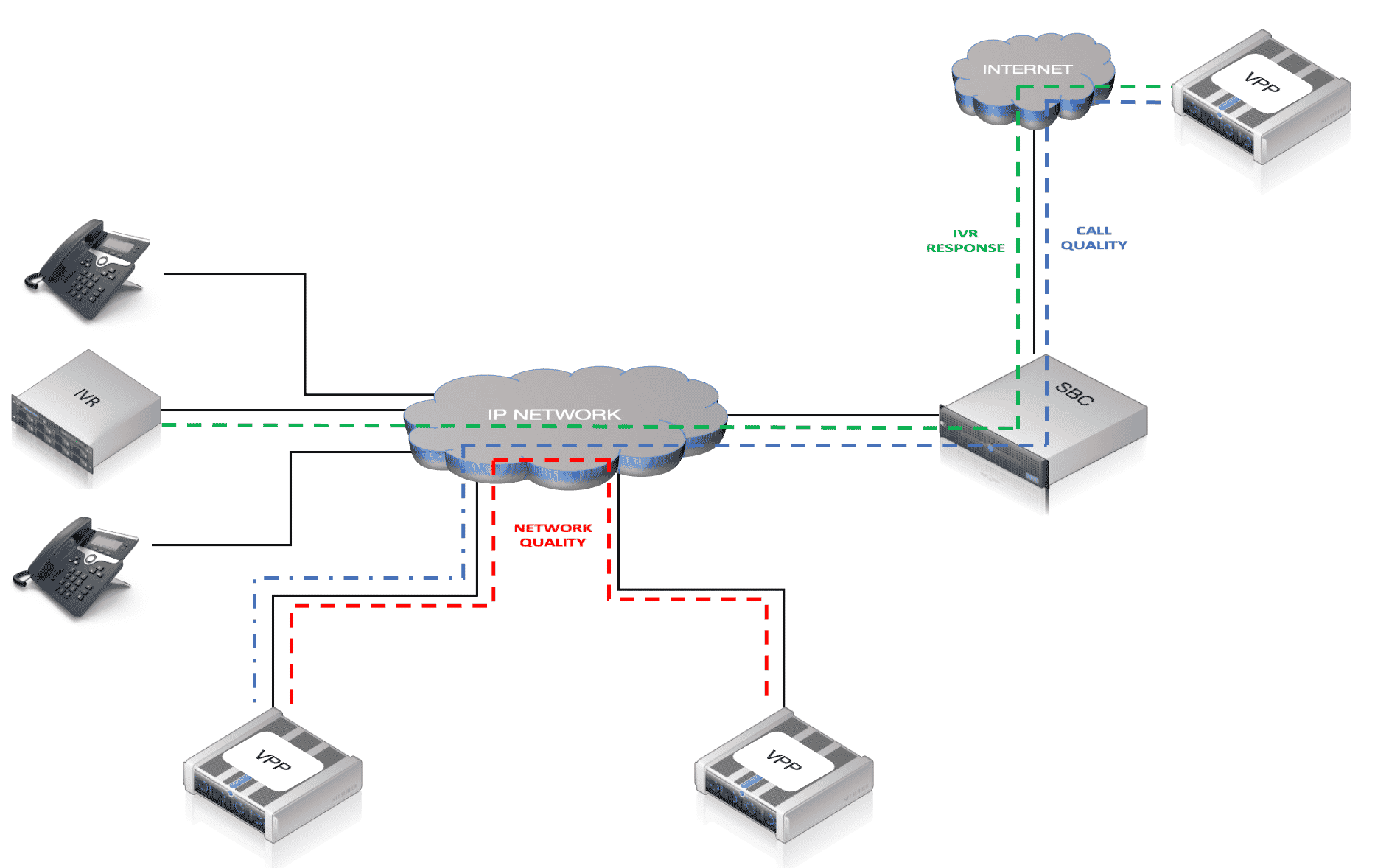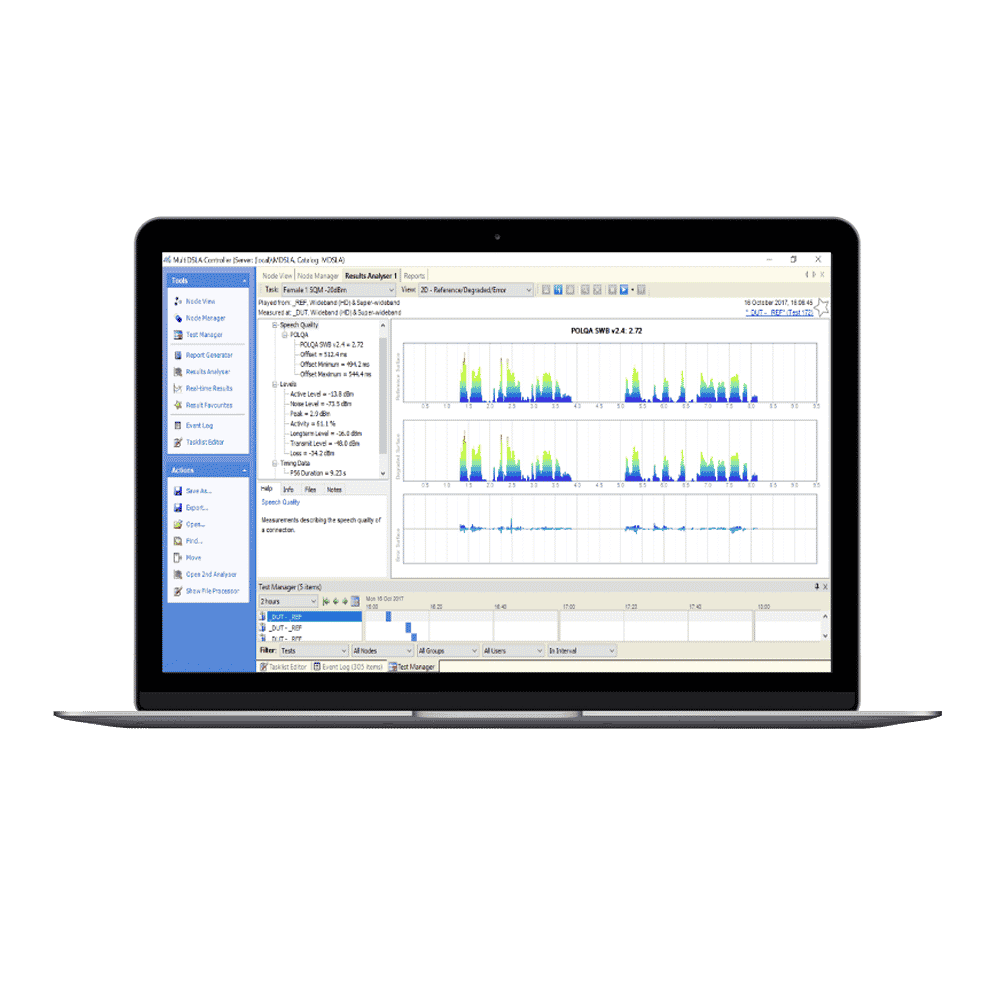Voice quality assurance for call centres
The importance of high quality audio to a call centre cannot be understated.
The ability to have clear conversations with customers is the reason a call centre exists. In order to operate efficiently the call operator needs to be able to have concise communication with the caller. Where there is poor audio quality on the line each call will last longer while parts of the conversation are repeated for clarification. In an environment where a key KPI is the number of calls handled per day, having longer duration or repeated calls due to call drops costs money, and increased expense is simply unacceptable.
Additionally, reports suggest that the perception of longer call times or the failure to resolve issues also impacts customer experience to the point that customer loyalty is negatively impacted.
Clearly voice call quality is of the top priority.
As call centres have transitioned from PSTN to Voice Over IP (VOIP) the ways in which call quality can be adversely affected has increased.
Network latency can lead to delays on the call, making it very difficult to maintain a conversation.
Dropped packets can lead to choppy audio and dropped calls.
Packet delay variation (also know as packet jitter) can result in “robotic” sounding voices and other audio artifacts.
In addition to the impairments that can be attributed to the network other consideration has to be given to poorly configured SIP servers, overloaded SIP trunks and other non-network factors.
With this in mind it is important for call centre operators to consider what are the relevant metrics they should be measuring and what KPIs should be assessed in order to assess the voice quality and ensure customer satisfaction.
Introducing MultiDSLA – the complete solution for voice quality assurance.
MultiDSLA tests voice quality end to end across your call centre, completely emulating and measuring the customer experience.
The flexibility of MultiDSLA allows it to test Session Border Controllers (SBCs), Interactive Voice Response (IVR) systems and 24/7 availability and performance across the supporting network infrastructure regardless of whether that network is on-premises, distributed or cloud-based.
At the heart of MultiDSLA or the MultiDSLA controller, managing the test and monitoring process and controlling the VoxPort Packet (VPP) VOIP nodes. The VPP nodes perform 3 main functions;
1 – Simulating calls into the call centre and navigating the IVR.
2 – Responding to call from a calling VPP.
3 – Measuring IP network impairments
The VPP nodes measure speech quality and network impairments, either on-demand or on an ongoing performance monitoring basis, ensuring the customer experience over time.
VQMAAS makes management of call quality across multiple teams and locations easy, making availability metrics, alarming and reporting available within a cloud based application. VQMAAS gives you the visibility to manage call quality across your entire call centre estate.

In a typical deployment such as that shown above, two VPPs are located on the IP network. These devices perform ongoing network quality measurements, detecting impairments such as packet loss, network latency and network jitter across the IP network. If severe enough these network impairments will affect call quality so it is important to understand if these underlying conditions exist. The benefit of performing these measurements on the IP network is that it allows the identification of IP network issues that can be rectified before they become voice service affecting. If tdegradations are detected on the IP network rather than on the voice service it also indicates where in the infrastructure the issues exist, reducing the amount of investigation required.
Generally an additional VPP will be located outside of the call centre. This VPP is used to perform voice quality and IVR response tests, emulating the actions of a caller and providing as assessment of the Quality of Experience (QoE) the caller can expect.
The VPPs act as reference SIP softphones. The externally located VPP will initiate calls into the VPP into the call centre, navigate the IVR and perform measurements on the quality of the audio between the internal and external VPP. Speech quality is tested using repeatable and accurate measurements based on international standards (PESQ, POLQA).
KPIs for both network impairments and speech quality are generated and monitored by MultiDSLA. Thresholding and report generation makes MultiDSLA a key part of your monitoring infrastructure, proactively reporting issues and also measuring and reporting service availability.
Summary.
MultiDSLA and VPP are a critical part of call centre infrastructure, reducing call length, reducing dropped calls, increasing call throughput and maintaining customer satisfaction.
Multi DSLA

State of the art measurement system for voice quality testing and ongoing performance assessment.
Key benefits
Voice Quality Of Experience – delivers true and objective Voice quality perceived by end users
Standards Based Analysis – Repeatable and accurate measurements based on international standards (PESQ, POLQA®).
Universal – Unparalleled interoperability allows call performance testing between any end points in analogue, digital, mobile or IP domains
Test Design Flexibility – Automation engine enables to create any test you need. Your imagination is your only limit.
Smart Analytics – Full drill-down and detailed graphical analysis help resolve problems quickly.
Seamless Integration – Comprehensive API enables you to automate MultiDSLA from anywhere, by any application, at any level
Scalable Architecture – Modular, Scalable Architecture makes it usable from the product Lab environment to Enterprise Network Operations
Arrange demo
